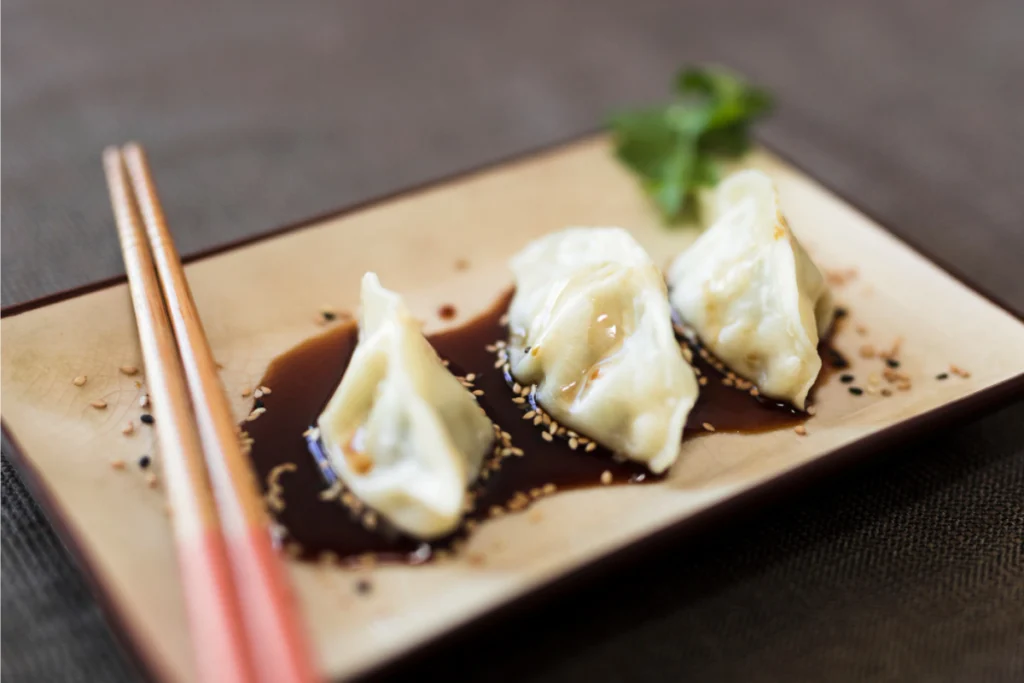
Soy sauce is a kitchen staple worldwide, known for its rich umami flavor and versatility in cooking. As a fermented condiment, soy sauce has an extended shelf life, but that doesn’t mean it’s immune to spoilage. Many people wonder, “Can soy sauce go bad?” and, if so, how to tell. This guide delves into the signs of soy sauce spoilage, best storage practices, and tips to help you decide when to discard an old bottle.
For further insights into soy sauce shelf life, check out Can Soy Sauce Go Bad? Understanding Shelf Life and Storage Tips and Should I Refrigerate Soy Sauce? A Comprehensive Guide.
Why Soy Sauce Lasts So Long: Understanding the Ingredients and Fermentation Process
Soy sauce has a unique makeup that gives it a long-lasting quality. Traditional soy sauce is made from soybeans, wheat, salt, and water. During the fermentation process, these ingredients combine with molds and bacteria, which break down the soybeans and wheat, creating a complex flavor profile and adding natural preservatives.
- Main Ingredients: Soybeans, wheat, salt, water
- Fermentation: Develops deep flavors and helps preserve the sauce
- Salt Content: Prevents bacterial growth, extending the shelf life of soy sauce
The combination of salt and fermentation is why soy sauce can last months, even years, when stored properly.
Different Types of Soy Sauce and Their Shelf Lives
Soy sauce comes in various forms, each with distinct flavors, colors, and shelf lives. Understanding the type of soy sauce you have is crucial to knowing how long it may last:
- Light Soy Sauce: Has a higher salt concentration, making it last longer.
- Dark Soy Sauce: Contains additives like molasses, which can slightly affect its stability.
- Low-Sodium Soy Sauce: The reduced salt content means it might spoil faster than traditional versions.
- Tamari: Typically gluten-free, with a similar shelf life to traditional soy sauce but may vary based on its specific ingredients.
Each type of soy sauce has unique characteristics that can influence its longevity, so knowing the type in your pantry can help with proper storage.
Expiration Dates vs. Best-Before Dates: Does Soy Sauce Really Expire?
Soy sauce often has a best-before date rather than an expiration date. This distinction is important because a best-before date refers to the period during which the sauce will have optimal quality, not safety. After this date, soy sauce is still safe to consume but may lose some flavor quality.
- Best-Before Date: Indicates when the sauce is at peak flavor, not safety.
- Extended Shelf Life: Soy sauce remains safe beyond this date, thanks to its salt and fermentation.
- Quality Degradation: Past its best-before date, soy sauce may taste different or look cloudy, but it’s still safe to use.
Signs That Soy Sauce Has Gone Bad
Though soy sauce has an extended shelf life, certain indicators reveal when it’s past its prime. Here are the top signs to look for:
- Color Change: Soy sauce naturally darkens with age. However, if it becomes unusually dark or opaque, it could signal spoilage.
- Off Odor: Fresh soy sauce has a savory, umami aroma. If it smells sour, musty, or strange, it’s likely time to discard it.
- Sediment or Cloudiness: Cloudiness or sediment buildup may indicate soy sauce that has lost quality or been stored improperly.
- Off Taste: If soy sauce tastes unusually sour, metallic, or off, it’s best to discard it.
How to Identify Spoiled Soy Sauce by Its Smell
One of the easiest ways to detect spoilage is by smelling the soy sauce. Fresh soy sauce has a rich, savory aroma with no sour or musty notes. If you detect a sour or musty smell, the sauce may have spoiled and should be discarded.
- Normal Smell: Balanced, savory aroma
- Spoiled Odor: Sour, musty, or unusual smell indicates spoilage
Appearance Changes: Darkening, Cloudiness, and Sediment
While soy sauce naturally darkens over time, excessive darkening, cloudiness, or the presence of sediment at the bottom can indicate spoilage. Here’s how to assess its appearance:
- Darkening: Gradual darkening is normal, but drastic color changes may signal spoilage.
- Cloudiness: Clear soy sauce becoming cloudy can mean it’s degraded.
- Sediment: Particles at the bottom may suggest that the soy sauce is past its prime.
Taste Test: How Does Expired Soy Sauce Taste?
If the smell and appearance seem fine, a small taste test can confirm whether soy sauce is still good. Fresh soy sauce has a balanced, salty taste with a slight sweetness. If it tastes sour, overly salty, or metallic, it’s best to discard it.
- Fresh Taste: Salty and savory with a slight sweetness
- Spoiled Flavor: Sour, metallic, or overly salty
Proper Storage Tips to Extend Soy Sauce’s Shelf Life
Storing soy sauce properly is essential to maximizing its shelf life. Here’s how to keep it fresh:
- Unopened Storage: Keep unopened soy sauce in a cool, dark pantry.
- Refrigerate After Opening: Storing it in the refrigerator helps preserve its quality after opening, especially for low-sodium or specialty varieties.
- Avoid Heat and Sunlight: Exposure to sunlight or heat can degrade the flavor and quality over time.
For more insights on keeping condiments fresh, see Storing Condiments Safely.
Should You Refrigerate Soy Sauce After Opening?
Though soy sauce can be stored at room temperature due to its salt content, refrigerating it after opening can help retain its best flavor. This is especially recommended for low-sodium and specialty soy sauces, which may lack the preservative benefits of traditional soy sauce.
- Room Temperature: Safe to store without refrigeration due to salt
- Refrigeration: Helps maintain flavor, especially for low-sodium varieties
Freezing Soy Sauce: Is It Necessary?
Freezing soy sauce is generally unnecessary due to its high salt content, which prevents it from freezing solid. Additionally, freezing does not extend its shelf life, so it’s best to avoid freezing.
- High Salt Content: Prevents freezing solid
- Unnecessary: Freezing does not improve shelf life or quality
Common Mistakes in Soy Sauce Storage and How to Avoid Them
Improper storage can lead to faster spoilage. Here are common mistakes to avoid:
- Exposing to Sunlight: Direct sunlight can alter color and degrade flavor.
- Storing Near Heat: Heat accelerates spoilage and flavor degradation.
- Not Sealing Tightly: Exposure to air can lead to oxidation, impacting quality.
FAQs About Soy Sauce Spoilage and Shelf Life
1. Can soy sauce go bad if not refrigerated?
Soy sauce can be safely stored without refrigeration due to its salt content, but refrigerating it after opening can help maintain its flavor.
2. What’s the shelf life of soy sauce after opening?
After opening, soy sauce typically lasts 6-12 months in the refrigerator, retaining optimal flavor.
3. Can you use expired soy sauce?
Yes, soy sauce is often safe to use past its best-before date, though flavor quality may degrade.
4. Does low-sodium soy sauce spoil faster?
Low-sodium soy sauce may spoil faster due to reduced salt content, so refrigeration is recommended.
5. What’s the best way to store soy sauce?
Unopened soy sauce should be kept in a cool, dark place, while opened soy sauce benefits from refrigeration.
Conclusion: Ensuring Your Soy Sauce Stays Fresh
Soy sauce is a long-lasting, versatile condiment, but recognizing signs of spoilage ensures you’re always using the freshest sauce. Knowing how to identify spoiled soy sauce—whether by changes in color, smell, or taste—can help you decide when it’s time to replace a bottle. Proper storage, such as refrigerating after opening, can further extend its shelf life, allowing you to enjoy its rich flavors for months. By following these guidelines, you can enjoy fresh, flavorful soy sauce in all your favorite dishes.
For additional information on soy sauce alternatives, explore What to Use Instead of Soy Sauce.
